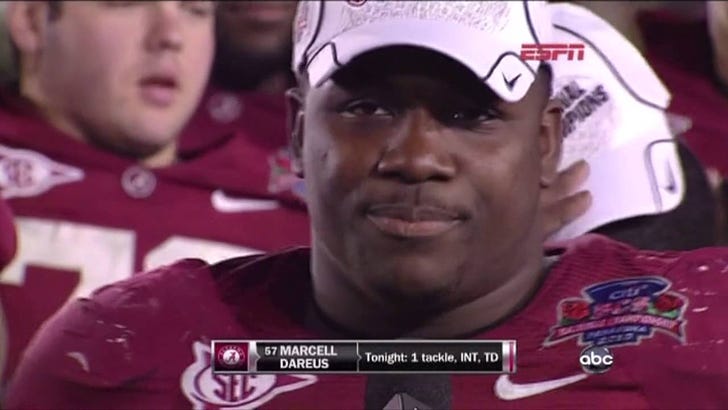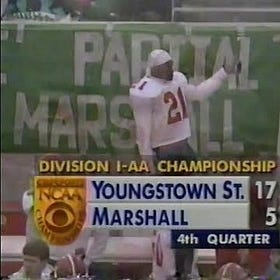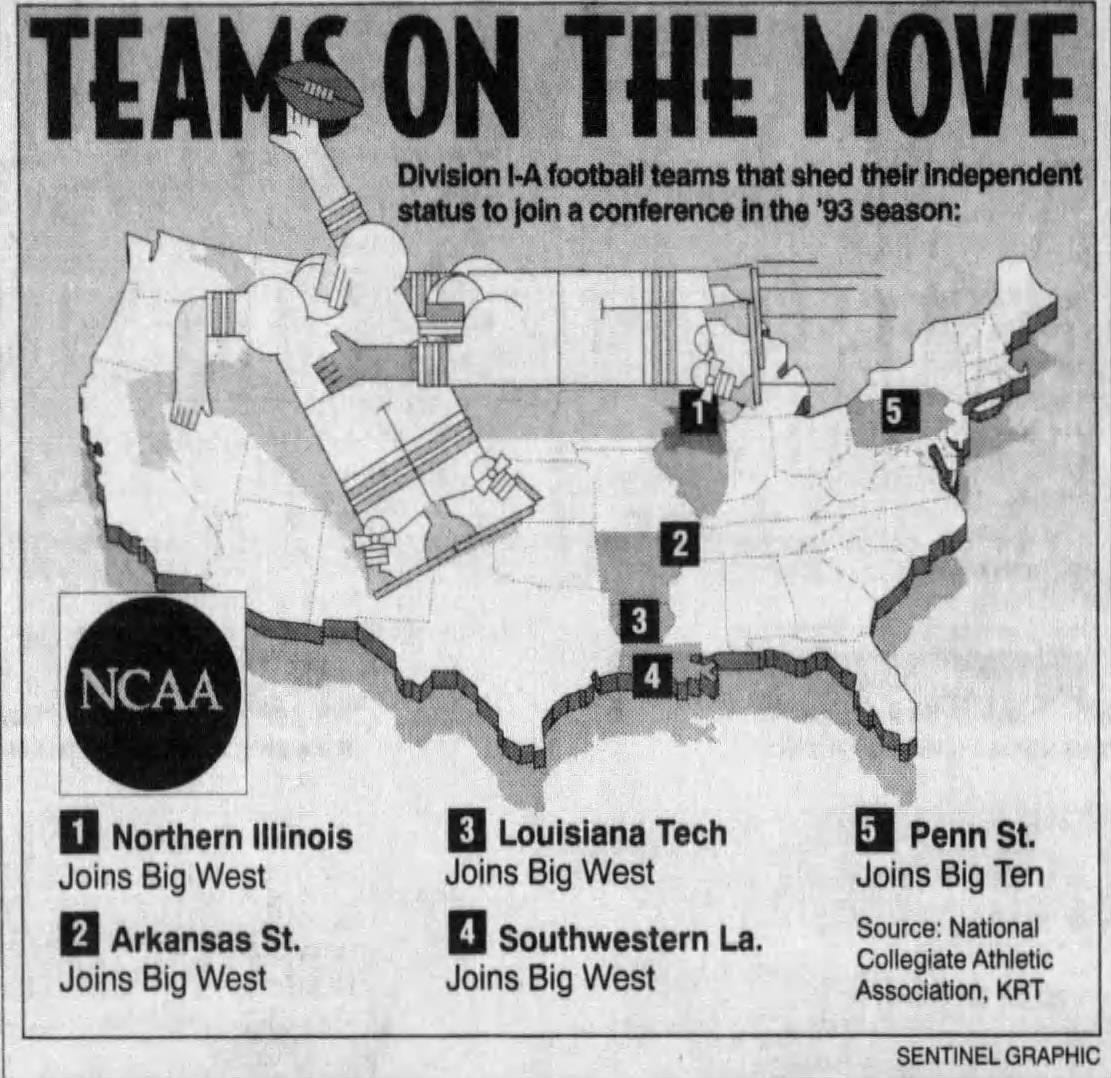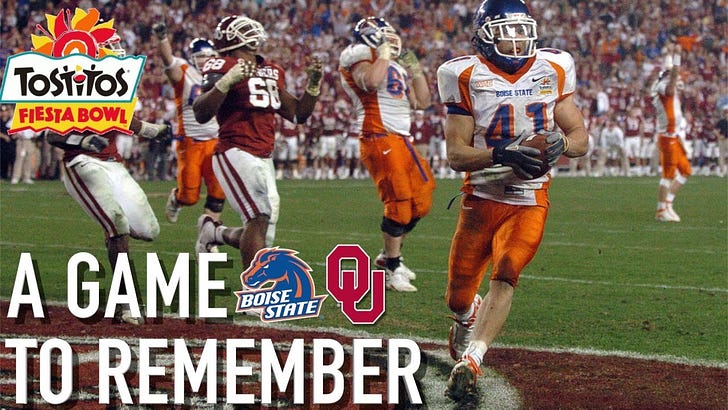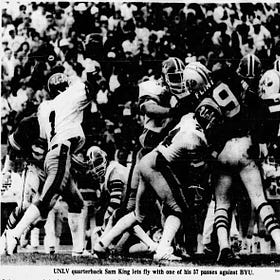Cause for celebration came sparingly in the Miami Dolphins’ 2007 campaign.
Of the many decisions that solidified him as the greatest coach in college football history, Nick Saban’s most savvy was leaving the NFL and the Dolphins in the offseason preceding the 2007 campaign. The organization’s abandoned pursuit of Drew Brees a year prior set off a chain of events that preceded Saban’s departure and culminated in the worst fall in Dolphins’ history.
What-If Wednesday: Drew Brees Joins the Miami Dolphins
January 2010 Confetti falls to the turf as a new champion out of the Southeast is crowned football’s champion. Nick Saban hoists the hardware in a moment emblematic of the first major step toward solidifying perhaps the greatest legacy in the game’s history.
But in Week 15, facing the very real prospect of suffering just the second winless (full) season in post-merger NFL history, quarterback Cleo Lemon connected with Greg Camarillo on a 64-yard touchdown in overtime as the Dolphins beat the Ravens, 22-16.
Lemon carved out an unlikely niche in Miami sports history with this score. It also wasn’t the first time he provided some late-season magic to quarterback a team out of a potentially winless season.
On Nov. 11, 2000, Lemon passed for two touchdowns and Arkansas State ended its brief tenure as a football affiliate of the Big West Conference with a 38-21 defeat of North Texas.
Arkansas State returned to Div. I-A in 1990 after a brief but successful stint in Div. I-AA for most of the ‘80s, including a trip to the 1986 National Championship Game. A-State became the first of three opponents Erk Russell-coached Georgia Southern beat for the title.
The Red Wolves1 appeared in four consecutive NCAA Playoffs from 1984 through 1987. Their fortunes upon moving up proved starkly less fruitful.
Arkansas State finished 6-26-1 in three seasons as an independent before joining the Big West in 1993. The Big West adding Arkansas State as a football-only member came in response to seismic shifts for the league at the start of the ‘90s.
Long Beach State folded its program following the 1991 season, its final roster featuring running back Terrell Davis. A year earlier, LBSU finished with an above-.500 record for the final time when it closed its season with a 29-20 defeat of UNLV, the culmination of a three-game winning streak.
Following the win over UNLV, players gave LBSU coach and Pro Football Hall of Famer George Allen a celebratory Gatorade bath — though Allen noted it was water, because, “We can’t afford Gatorade.”
Allen died a month later, though Allen’s son years later dispelled rumors the Gatorade dump played any part.
George Allen’s lone season at Long Beach State marked one last hurrah for the program before shutting down. Then, a year after LBSU ceased football operations, Cal State Fullerton followed suit.
Coupled with Fresno State leaving for the Western Athletic Conference in 1992, the Big West needed new members. Badly.
Nevada was a natural choice in 1992 when it moved up from Div. I-AA. Under the guidance of coach Chris Ault, the Wolf Pack flirted with the national championship in 1990 — joining future Big West counterpart Arkansas State in the club of teams that lost in the title round to Erk Russell and Georgia Southern — and again in 1991 before losing a thriller to Jim Tressel-coached Youngstown State.
The Championship Rivalry That Helped Shape 21st Century College Football
Four teams remain in the FCS Playoffs with the semifinals this weekend, and for the first time in more than a decade, not one is North Dakota State. The Bison’s run of dominance is arguably the most impressive in modern sports history. It’s also perhaps an indicator that, as bored as most of might be with Alabama and Clemson routinely in the College Foo…
Nevada proved considerably more successful in its move to I-A than Arkansas State, finishing 7-5 in 1992, winning the Big West championship, and capping the season in an instant classic Las Vegas Bowl against Bowling Green.
The Pack again finished near the top of the Big West in 1993, tying for the most conference wins. But a new-look league with an influx of affiliates and a geographic footprint that stretched the definition of “West” to include anything west of the Eastern Time Zone forced a wonky schedule that season in which Nevada and New Mexico State played seven conference games.
Co-champions Utah State and newcomer Southwestern Louisiana (now Louisiana, or Louisiana-Lafayette, depending who you ask) went 5-1, each playing six Big West games.
The Ragin’ Cajuns in fact finished tied atop the Big West in the loss column in each of their first two seasons as members, each time with Nevada also in the mix. However, neither UL or UNR earned the conference’s lone bowl bid in 1993 or 1994: Utah State went to the Las Vegas Bowl in ‘93, and UNLV in ‘94, the door opened both seasons when Nevada lost its regular-season finale.
In 1993, on the same day that Boston College stunned a top-ranked Notre Dame team that was fresh off its Game of the Century win over Florida State2, another upset of less national significance unfolded. However, it was a much more shocking result when Arkansas State scored a touchdown in the closing seconds for the Red Wolves to down the Wolf Pack, 23-21.
Quarterback Johnny Covington found receiver Reggie Murphy on what was just Covington’s third touchdown pass of the season. More remarkably, it sealed the only win of Arkansas State’s first two years in the Big West.
The Red Wolves improved to .500 in-league by 1995, just in time to be jettisoned along with Southwestern Louisiana, Louisiana Tech and Northern Illinois.
Described as “the Big West football consortium” in a November 1996 series by The Town Talk (Alexandria, Louisiana), the gridiron-only affiliates were part of a reshuffling with Boise State, Idaho and North Texas3 moving up from Div. I-AA and joining the Big West as full-fledged members.
Ironically, the restructuring of the Big West in the mid-1990s to build a more geographically friendly conference of full membership makes for an interesting case study supporting the idea of football leagues that detached from the other sports. A conference in which Nevada basketball is expected to make trips to Lafayette, Louisiana one week and DeKalb, Illinois the next makes no sense.
But for football, with far less overall travel relegated mostly to weekends, the Big West could have fielded one helluva gridiron-only league combining its membership from the 1996 season with the removed “consortium.”
Arkansas State: Played in nine consecutive bowl games from 2011 through 2019.
Boise State: Grew into the gold standard for non-power conference programs and a perennial contender for the Top 25 with a foundation laid at the end of its Big West tenure.
College Football's Crossroads Intersect at Boise State
LOS ANGELES — No program through the first two decades of the 21st Century more consistently ran up against but also chipped away at college football’s glass ceiling than Boise State. With the sport amid a period of more major changes in a shorter span than any time since in modern history, the Boise States of the world perhaps face an even stronger barrier between them and the game’s upper echelon.
Idaho: Despite lean years for much of its two stints in the Sun Belt and most of its time in the WAC, Idaho showed potential shortly after its move from Div. I-AA. The Vandals finished 9-3 in 1998 including 4-1 in the Big West, winning the conference championship and landing the league’s bid to the Humanitarian Bowl. More on that in a bit.
Louisiana: Reached bowl games in 11 of the last 13 seasons, won nine games or more seven times over that stretch, and twice finished ranked in the national Top 25.
Louisiana Tech: The Bulldogs played in bowl games in nine seasons from 2008 through 2020, including seven straight over a stretch in which they won at least eight games in 5-of-6 campaigns.
What may have been the best La. Tech team over that stretch, peaking at No. 19 in the 2012 AP Poll, did not play in a bowl but finished 9-3.
Perhaps more noteworthy than its team records over the last 15 years is the individual standouts and alumni La. Tech sent to the NFL. The program had 17 players drafted from 2010 through 2021, including Vernon Butler in the 1st Round of the 2016 draft.
L’Jarius Sneed started for a pair of Super Bowl-winning Kansas City Chiefs teams, and he landed a hefty contract in the 2024 offseason from Tennessee.
And, in their college careers, draftees Kenneth Dixon and Jaylon Ferguson set records: Dixon for the most rushing touchdowns in a freshman season, then briefly the career rushing-touchdown mark; and Ferguson for career sacks.
Nevada: The Wolfpack went to bowl games in 14 seasons from 2005 through 2021, including eight straight during Chris Ault’s third tenure as Nevada head coach.
The 13-1 team in 2010 finished ranked No. 11 nationally, with Colin Kaepernick joining Tim Tebow (2007) and Cam Newton the same season as the only three players ever to produced 20-plus passing and 20-plus rushing touchdowns in a single campaign to that point.
New Mexico State: Although one of the most historically downtrodden program, New Mexico State’s three bowl appearances since 2017 — including in both of Jerry Kill’s seasons leading the Aggies — offer hope of sustained success in Las Cruces.
North Texas: UNT launched Hayden Fry in the late 1970s during a tenure that included a final rank of No. 16 in the 1977 Coaches Poll, won with some consistency at the I-AA level, and upon the Big West’s collapse, immediately became the standard-bearer of the Sun Belt for four years.
After a dark period in the latter-half of the 2000s into the early 2010s, North Texas enjoyed an upswing in the late 2010s.
Northern Illinois: A run of five consecutive seasons winning at least 11 games, peaking with the 2012 Huskies’ trip to the Orange Bowl, marked the culmination of a steady climb after some humbling initial seasons in the Mid-American Conference.
Northern Illinois became the benchmark for the MAC for a stretch lasting nearly a full decade.
Utah State: Utah State’s modern run with 11 bowl-game appearances since 2011 and three seasons ending with the Aggies ranked in the final AP Top 25 marks the program’s greatest stretch since the days of John Ralston and Tony Knap — who laid the foundation for another Big West member to be a potential consistent winner — in the 1960s.
Dead Conferences Part 1, Chapter 3: UNLV Football's Brief Brush with Greatness
Driving southwest on Interstate 15 as I left Las Vegas following a week of college basketball tournaments, I noticed a billboard approaching The M on the city’s outskirts with the phrase, “Make UNLV Basketball 1990 Again.” The cringiness of invoking an especially divisive campaign slogan from almost a decade ago notwithstanding, the general sentiment aligns with a few positions I have shared on The Press Break:
As a football-only conference, the above has some potential. It’s also less geographically funky than the present-day Conference USA, to which a couple of old Big West members belong (La. Tech and New Mexico State).
However, the rest are all currently in leagues that are better geographic fits: Boise State, Nevada and Utah State in the Mountain West4; Arkansas State and Louisiana in the Sun Belt; Northern Illinois in the MAC; Idaho in the Big Sky; and even North Texas, for as expansive as the American Athletic Conference is, makes more sense than the above-detailed vision for the Big West could have been.
And, with the exception of Boise State, which was clearly building to what it would become in the final years of the Big West, few came all that close to realizing their potential until after leaving the league.
Sure, Nevada and Utah State were both solid in the latter Big West days. But neither made that step to being Top 25-caliber until they were in the WAC.
The most interesting case is Idaho, which also ties into Nevada.
With appearances in back-to-back FCS Playoffs, and advancing to the quarterfinals this past season, Idaho seems to have found its place as an upper-tier FCS program.
The Vandals struggled for the better part of two decades before moving back to the Big Sky Conference. But there is a case of What If with regard to Idaho’s viability as a successful FBS program, stemming from the Vandals’ final years in the Big West.
Before Boise State’s breakthrough to win the last two conference championships, Idaho claimed its only I-A league title in 1998. The team’s 9-3 finish, culminating in a Humanitarian Bowl win over Southern Miss, was the program’s best until the penultimate FBS Vandals squad went 9-4 in 2016.
Idaho’s 7-4 finish the following season marked the program’s last above-.500 campaign for 10 years. And it wasn’t just that Idaho finished belove .500 consistently from 2000 through much of its time through 2017; the Vandals were routinely awful, winning just one game five different times after the Big West ceased football operations.
Idaho’s downturn began immediately upon the departure of alum Chris Tormey as head coach to take the same post at Nevada. Tormey was tabbed to replace Jeff Tisdel, whose run succeeding Chris Ault after Ault’s second retirement ended disastrously.
A December 1999 Coeur d’Alene Press report of Tormey’s farewell from Moscow describes the coach visibly crying, accepting responsibility for having previously denied interest in the Nevada job.
This was less than one full year after the Tormey-coached Vandals beat Southern Miss — which, in the weeks following Tormey’s hire at Nevada, snatched up longtime Ault-disciplie Chris Klenakis to work as an assistant to Jeff Bower.
Klenakis’ departure and that of former Ault assistant/one-time Big West-winning head coach Jeff Horton to Wisconsin in 1999 left Nevada without trace of its iconic leader’s regime upon Tormey’s arrival. As the headline of a February 2000 column in the Reno Gazette-Journal described it:
This wasn’t Tormey thumbing his nose at Nevada’s traditions, like the infamous Brian VanGroder hire at Georgia Southern a half-decade later. Tormey specifically cited running a “single-back” formation in reference to The Pistol upon his introduction at Nevada.
Nevertheless, he wasn’t Ault, and the Wolf Pack went 2-10, 3-8, 5-7 and 6-6 in his Tormey’s tenure.
Idaho, meanwhile, enjoyed its best season under Tom Cable in 2000 going 5-6. Running back Willie Alderson rushed for almost 1,200 yards and scored 15 total touchdowns en route to 1st Team selection on the final All-Big West Conference team.
Wil Beck shared the league’s Defensive Player of the Year with Boise State’s Quintin Mikell.
The All-Big West 1st Teams were made up largely of Boise State, Utah State and Idaho players — not surprising, given they were the only teams to win more than one conference game that season.
That includes Arkansas State — the only member of the “consortium” to return to the Big West fold, doing so in 1999 and 2000 — with its 0-for-avoiding victory over North Texas behind Cleo Lemon.
All but Boise State finished the 2000 below .500 overall, a stark contrast to the first season of the Pacific Coast Athletic Association in 1969 when 5-of-7 finished above .500.
An even starker contrast: Not one member of Big West football in 2000 was there for the inaugural season of the PCAA in 1969.
Arkansas State did not adopt the nickname Red Wolves until 2008, but we’ll use the present-day branding for this post.
I do plenty of shameless self-plugging on this newsletter, including previously directing readers to this particular piece on the 1993 Notre Dame-Florida State matchup and first on-the-road edition of College Gameday. But if you’ve never read, I really do hope you will; it’s my favorite article I wrote in 2023, and one I consider among my best ever.
Coincidentally, North Texas bookended its time in I-AA with playoff exits against counterparts from its time in the Big West. The Mean Green lost to Nevada in the 1983 Playoffs, 20-17 in overtime; and 24-20 to Boise State in 1994.
All by way of the Western Athletic Conference, which was a stopover between the Big West and Mountain West for a variety of current MW members. But we’ll get more into that in Part 2 of Dead Conferences.




